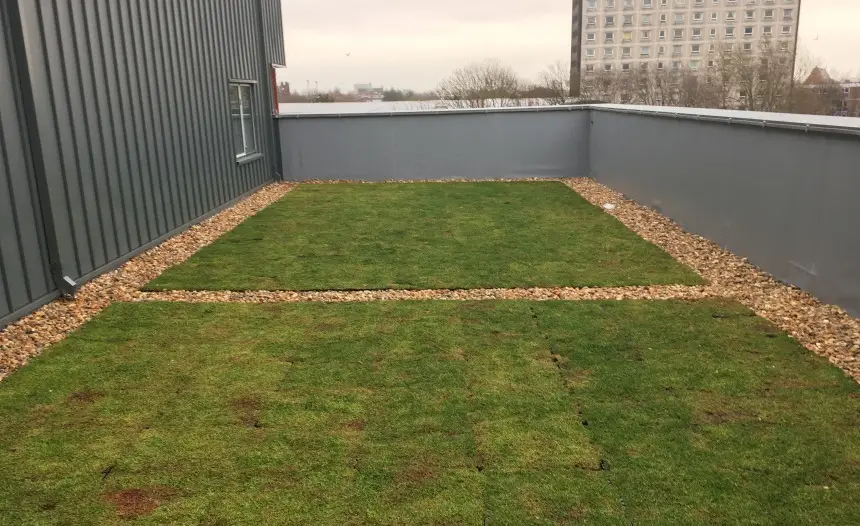So what do you need to consider when aesthetics are one of the biggest requirements of your client? It can be challenging to choose the right roofing system that will complement the look of the building, provide an efficient installation and durability at the same time.
Asking the below questions will help you to get the most of the answers you need and put you in the right direction.

The General Dome, Bristol – IKO Armourplan PSG PVC membrane -Photography by Terence Smith “terencesmithphotography.co.uk“
1. What aesthetics do you want to deliver?
What angle will the roof be seen from? Will it be looked at from a distance or seen from a close angle?
Does the waterproofing material need to be used in conjunction with some existing material, structures or cladding? Do the planning constraints require a similar aesthetics, material or colour match?
Sometimes the roof may have a function that comes with certain aesthetic implications. For instance, podium roofs might be used as an amenity space which urges a requirement for aesthetic appeal.

Illustrious House, Portsmouth – IKO Armourplan PVC membrane
Or if the building is on a country side or surrounded by a distinctive view, you could design the roof to make the building hide in the landscape.

The Wave, Scottish Borders – IKO Spectraplan SM & IKO Spectraplan SG
Once you have answers to these questions, you will realise that some material choices will work better than others to match these requirements. For example, if you require a coloured roof to make the building stand out more, then single ply would be your ‘go to’ material as PVC provides you a broad range of colours to choose from.
What roof structures are you dealing with?
The construction of a building also provides a good indication on what roof structure and waterproofing solution to choose.
Lightweight steel frame structures and large timber frames are commonly used on commercial and industrial buildings. These lightweight structures restrict the roof design as they could only carry a light roofing system. This is again where single ply would work better than other alternatives as it is a lightweight system and also provides fast track installation on large commercial buildings.

Ocado Distribution Centre, Erith – Armourplan PVC membrane, 40,000m2
Other buildings such as high rise residential, public and civil buildings such as hospitals, may be constructed using dense masonry where a heavier roof structure is possible.
For example, on dense concrete structures where the roof needs to be accessed frequently and the foot traffic is heavy, it might be a better option to consider hot melt or liquid as the roof would be easier to maintain. Single ply can still be used in scenarios like this. However, extra care should be taken to protect the membrane both during and after installation.
If you identify what sort of construction the building is going to be (i.e concrete, steel or timber), this would give you a better clue on the recommended waterproofing solutions as some work better than the others for specific construction types.
Original article was published by Ross Finnie on SIG Design and Technology’s website: www.singleply.co.uk
For more information, please contact IKO Polymeric’s technical team.



